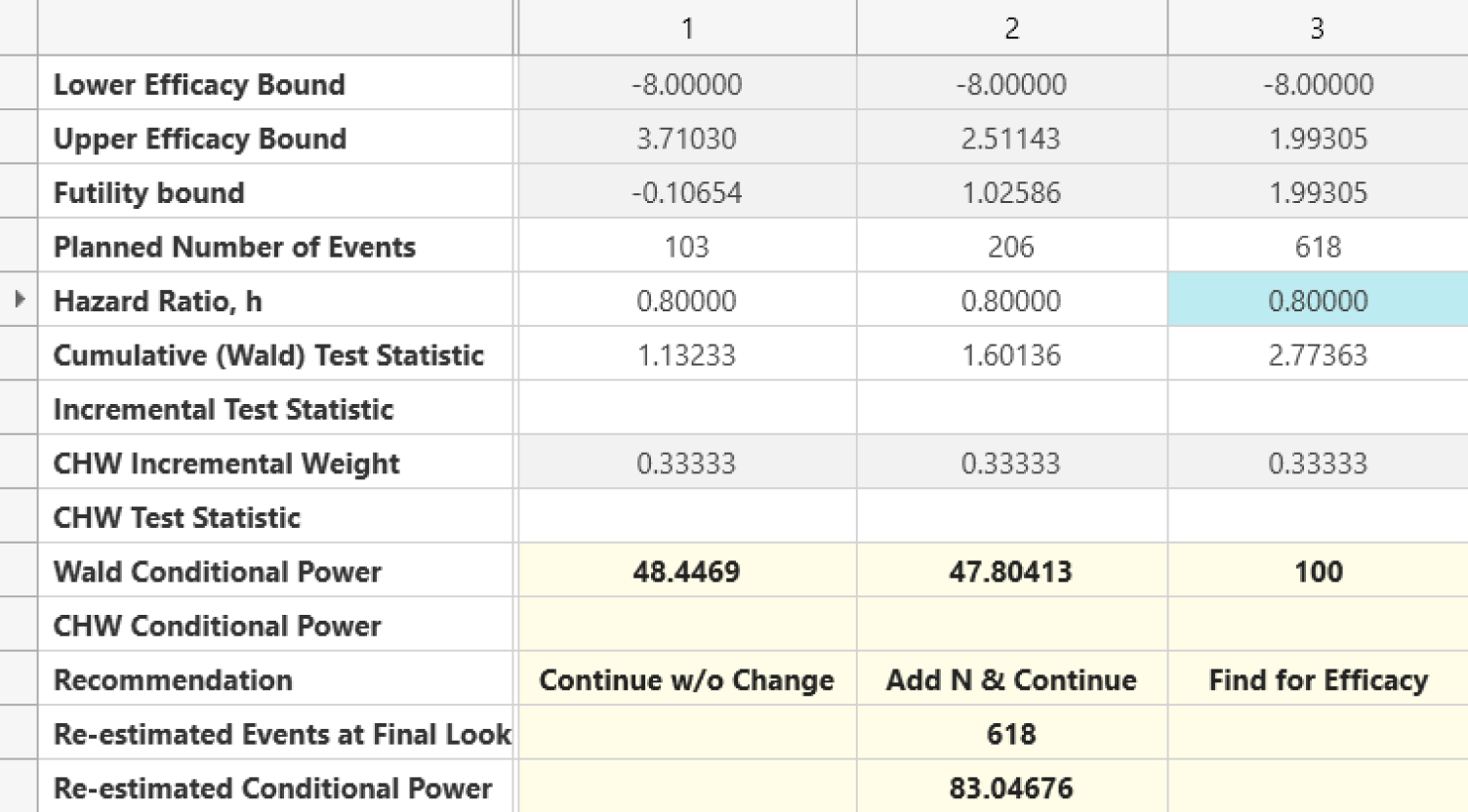Group Sequential and Promising Zone Designs

Calculate boundaries, evaluate interim data & re-estimate sample size
Group Sequential and Promising Zone Designs
Adaptive in Nature
nQuery allows for modifications to the sample size based on interim results, enhancing flexibility and responsiveness to emerging data


Efficiency in Sample Size
Power for a smaller sample size based on realistic estimates but keep the flexibility to find lower clinically relevant effect sizes
Save Promising Trials
Save trials with promising interim results but a high probability of failure by increasing sample size using the Promising Zone design

nQuery’s Group Sequential and Unblinded Sample Size Re-estimation tools can maximize your chances of trial success
Find Stopping Rules
Find boundaries for early stopping for efficacy and futility
Evaluate Interim Data
Provide your interim data and find the optimal interim choice
Increase Sample Size
Save promising trials by increasing sample size based on conditional power
Compare Sequential Methods
Evaluate error spending, Wang-Tsiatis, Haybittle-Peto and more
Input Custom Boundaries
Input and convert between Z-value, p-value, Score and effect size boundaries
Understand Exit Probabilities
Evaluate the probability of early stopping under the null & alternative hypothesis
Frequently Asked Questions
What is Group Sequential and Promising Zone Designs in nQuery?
The best design depends on the specific research question and priorities. Group Sequential is ideal when early stopping for efficacy or futility is the main goal. Promising Zone is a good option if adjusting sample size based on interim results is preferred.
Group Sequential Design Theory
Group sequential design is a type of clinical trial design that allows researchers to examine the data throughout the study, with the option to stop early under certain circumstances.
Recommended Resources
Get started with nQuery today
Start for free and upgrade as your team grows














